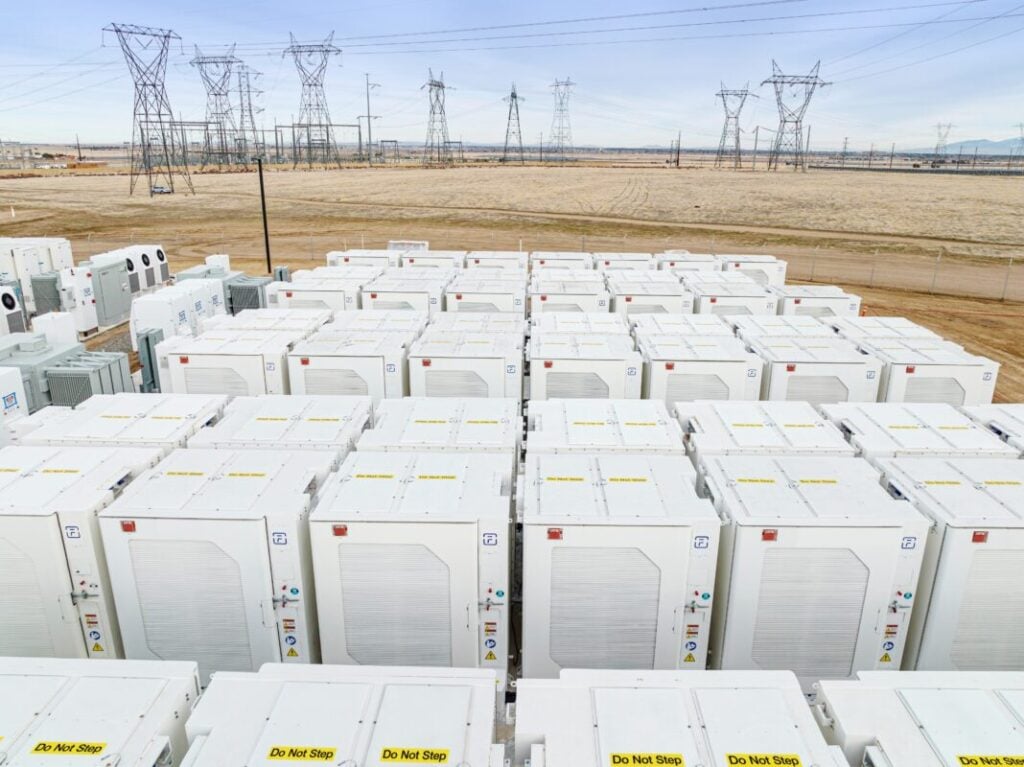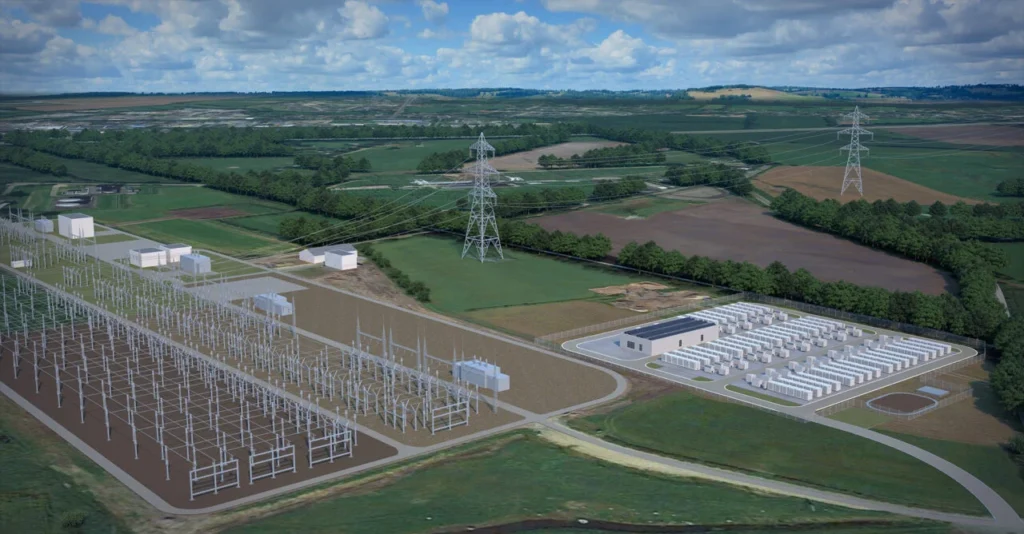
Rob Hills, APAC vice-president of engineering and commissioning at Fluence, explains the potential of BESS as virtual transmission in Australia.
Australia stands at the forefront of the global energy transition, with ambitious decarbonisation targets and increasing renewable energy penetration. But, as the National Electricity Market (NEM) grapples with ageing infrastructure, congestion, and a declining number of synchronous generators, innovative solutions are essential.
Enjoy 12 months of exclusive analysis
- Regular insight and analysis of the industry’s biggest developments
- In-depth interviews with the industry’s leading figures
- Annual digital subscription to the PV Tech Power journal
- Discounts on Solar Media’s portfolio of events, in-person and virtual
One of the most promising developments is the use of battery energy storage systems (BESS) as virtual transmission—a concept increasingly referred to as storage-as-transmission assets (SATA).
This approach is already being actively deployed in Germany and elsewhere. In Australia, the opportunity is clear: by deploying BESS strategically along transmission corridors, we can ease congestion, increase asset utilisation, reduce reliance on new lines, and stabilise the grid – all while enabling deeper renewable energy integration.
What is virtual transmission?
Traditional transmission upgrades are costly and time-intensive, often taking years to plan and execute. Virtual transmission is a much faster solution, leveraging energy storage to relieve stress on the grid. Strategically placed BESS are fast to deploy and can reduce the need, or allow more time, for additional network investments.
Energy storage also has the benefit of a smaller footprint and less impact to communities than traditional network investment. Depending on the nature of the arrangement, BESS can be used to store energy during low-demand periods and release it when the grid is constrained, effectively shifting power across space and time.
Alternatively, BESS can react to transmission system faults in a way that avoids the need for the additional line capacity that is typically reserved for contingency events. By doing so, storage can increase a powerline’s overall load carrying capacity.

In Germany, transmission system operators (TSOs) including TenneT and TransnetBW are deploying three large-scale BESS to act as grid boosters. A 250MW/250MWh project by TransnetBW will be used to ease grid congestion driven by coincident wind energy output by taking over the n-1 requirement. In doing this, energy storage supports higher utilisation of the existing transmission infrastructure—an economic and environmental win.
The German regulator has approved two additional projects, 250MW/250MWh each, which will be tendered in 2025/26. These projects will bring the total energy storage used as a transmission asset in Germany to a total of 950MW/950MWh.
Similarly, the EPSO-G Energy Cells project in Lithuania is playing a critical role in decoupling the Baltic states from the Russian grid. The project is expected to enhance resilience and support synchronisation with the continental European grid, delivering energy security to the Baltic states.
The Australian landscape: room for innovation
Australia is well-positioned to use SATA to delay or reduce investments in traditional network infrastructure. However, the regulatory arrangements are often difficult to navigate. Recent reforms are improving the possibility of deploying SATA, such as:
- The Australian Energy Market Commission (AEMC)’s recent rule change to improve cost recovery arrangements for transmission non-network options in the Regulatory Investment Test for Transmission (RIT-T).
- The Special Integrity Protection Scheme (SIPS) which, similar to Germany, uses a procurement framework to strategically deploy storage and renewables to support the network at critical times.
- Network support agreements (NSAs) which can be used, especially at fringe-of-grid, to reduce the need for network upgrades.
Making the stars align: From potential to practice
There are some schemes currently available in the NEM to support SATA, including the System Integrity Protection Scheme (SIPS) and the inclusion of non-network options in the Regulatory Investment Test for Transmission (RIT-T) framework.
However, BESS is also well-placed to be able to provide multiple services across both transmission, wholesale market, and other system services. Historically, investment in the power system has focused on transmission or wholesale market operations, rather than on investments that can support both. BESS is well-placed to value stack multiple sources of revenue and drive lower cost and more reliable outcomes for consumers.
A complex matrix of stakeholders – market bodies, regulators, developers, and original equipment manufacturer’s (OEMs) – must work together to turn this value stacking into a reality. Decarbonising the grid towards inverter-based technologies will be enhanced when Australia develops:
- New markets to explicitly value system services that can be addressed in-market such as inertia.
- Consistent procurement approaches and technical standards to facilitate the timely development of innovative energy storage products that are resilient to future system needs.
Such reforms are critical to make sure that governments and market bodies see the investment needed to decarbonise Australia’s grid:
- Product developers can prioritise development of technology to deliver the best possible assets to meet our system needs.
- Project developers and independent power producers can value the full range of system services to make the best investments that can support grid stability and deliver returns over asset lifetimes.
SATA is not just about easing congestion. BESS can deliver a suite of advanced grid services critical for system strength and stability:
- Synthetic Inertia and Virtual Synchronous Machine (VSM): Mimics synchronous generator behavior to stabilise frequency.
- Power Oscillation Damping: Controls inter-area oscillations that threaten grid stability.
- Black start: Re-energises the grid post-blackout, without reliance on thermal assets with spinning machines.
- Dynamic Voltage Control: Stabilises voltage amid rising renewable energy volatility.
Lessons from Iberia’s recent blackout
The importance of system resilience was underscored by the recent blackout in Iberia, where a sudden system event led to widespread disruption. While Fluence had no active projects in Iberia at the time, its systems elsewhere in the continental European grid performed as expected.
The role of reduced inertia on the grid, due to the high penetration of inverter-fed renewables, may have played a role in the events that led to the blackout. The cause of the event remains under investigation, and a detailed ENTSO-E report is forthcoming.
This incident reinforces the relevance of battery systems equipped with fast-responding, grid-forming capabilities.
As we move away from thermal asset inertia sources, these technologies are no longer nice to have—they are essential for grid resilience.
BESS as virtual transmission offer a pragmatic solution to many of Australia’s most pressing grid challenges. They are fast to deploy, highly flexible, and capable of addressing network utilisation and system stability issues. They complement and provide more time for additional investment in transmission assets.
Australia already has the technical expertise, project momentum, and stakeholder alignment to lead globally in this domain—now it needs the technical standards and transparent markets to match. With the right reforms, virtual transmission can become a cornerstone of Australia’s energy transition strategy, delivering cleaner, cheaper, and more reliable power to all Australians.
About the Author
Rob Hills is the APAC Vice President of Engineering and Commissioning at Fluence, where he leads the engineering and commissioning teams across the Asia-Pacific region. With extensive expertise in energy storage and grid integration, Hills oversees the successful deployment of Fluence’s energy solutions.
His leadership ensures the efficient execution of projects, from engineering design to on-site commissioning, contributing to the acceleration of clean energy adoption. Hill’s strategic vision and technical expertise are pivotal in driving Fluence’s mission to transform the energy landscape across the APAC region.

